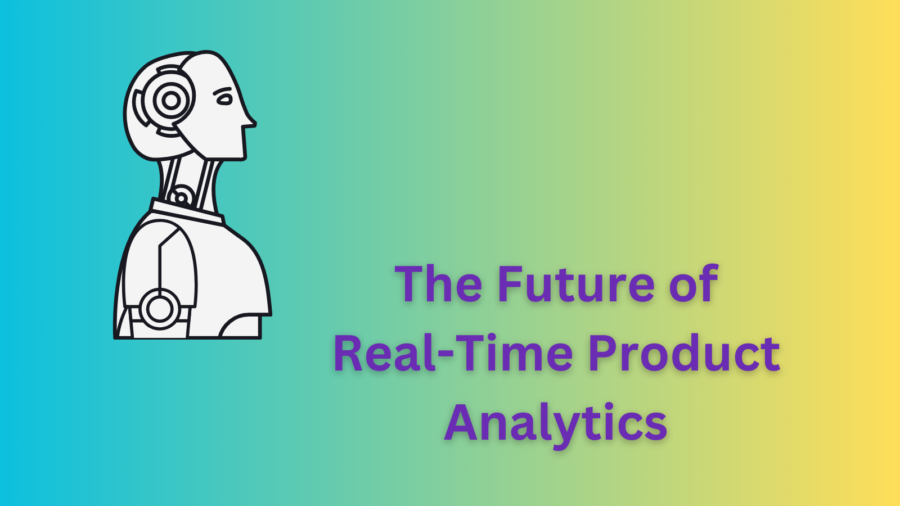The ability to make informed decisions can often mean the difference between success and stagnation. This is where real-time product analytics steps in as a game-changer. As technology evolves, so do the tools available for businesses to gather and analyze data. Real-time product analytics is emerging as a pivotal force in data-driven decision-making, offering companies the ability to respond to user behaviors instantly. In this blog post, we’ll delve into the exciting realm of real-time product analytics, exploring its potential to reshape decision-making strategies across industries.
The Power of Real-Time Insights
In the traditional approach to data analysis, businesses would collect data over a period of time and analyze it retrospectively. However, this retrospective analysis often fell short when it came to responding promptly to changing market dynamics and user preferences. Real-time product analytics flips the script by providing insights as they happen, allowing businesses to adapt in the moment.
Real-time insights empower businesses to identify emerging trends, track user behavior shifts, and even detect anomalies that might require immediate attention. This is particularly crucial in industries like e-commerce and online services, where a timely response to customer needs can drive competitive advantage.

Benefits of Real-Time Product Analytics
- Agile Decision-Making: Real-time product analytics enables businesses to make quick, informed decisions based on the most current data. Whether it’s optimizing marketing strategies or refining product offerings, agility becomes a key advantage.
- Personalized User Experiences: With real-time insights, businesses can customize user experiences at the moment. Companies can deliver tailored recommendations, content, and offers by understanding user behavior as it unfolds.
- Fraud Detection and Prevention: In sectors like finance and cybersecurity, real-time analytics can swiftly identify and address fraudulent activities, safeguarding sensitive data and transactions.
- Proactive Issue Resolution: Real-time monitoring allows businesses to address issues before they escalate proactively. For instance, app crashes or website downtime can be swiftly detected and rectified, minimizing user frustration.
- Supply Chain Optimization: Industries reliant on supply chains can benefit from real-time insights into inventory levels, demand fluctuations, and production efficiency, leading to better inventory management and reduced costs.
- Enhanced Customer Support: Real-time analytics can provide support teams with context about user interactions in real-time, enabling them to offer more informed and personalized assistance.
Implementing Real-Time Product Analytics
Implementing real-time product analytics requires a well-thought-out strategy. Here are the steps to consider:
- Choose the Right Tools: Select analytics tools capable of real-time data processing. Tools like Google Analytics 4, Mixpanel, and Snowplow offer real-time tracking and analysis capabilities.
- Define Key Metrics: Identify the key performance indicators (KPIs) that matter most to your business. These could include user engagement, conversion rates, and revenue metrics.
- Set Up Data Streams: Implement data collection mechanisms that allow for real-time data streaming. APIs and event tracking are commonly used to capture and transmit data as it’s generated.
- Data Processing and Storage: Ensure you have the infrastructure to handle and store real-time data. Cloud-based solutions and data warehouses can help manage the influx of data.
- Visualize Insights: Utilize data visualization tools to transform raw data into actionable insights. Dashboards and reports can provide a real-time snapshot of your business’s performance.
- Automate Responses: Implement automated triggers and alerts based on predefined thresholds. This ensures that you’re notified when specific events or conditions occur.
- Data Security: With real-time data, security is paramount. Implement robust security measures to protect sensitive customer information and adhere to data protection regulations.
Challenges and Considerations
While real-time product analytics offers incredible advantages, it’s not without challenges:
- Data Quality: Real-time data can be prone to errors. Ensuring data accuracy and consistency is crucial for making reliable decisions.
- Resource Intensity: Processing and analyzing real-time data can be resource-intensive. Adequate infrastructure is essential to avoid performance bottlenecks.
- Data Privacy: Real-time analytics must adhere to data privacy regulations. Handling sensitive user information in real time requires stringent security measures.
- Overwhelming Insights: The influx of real-time data can be overwhelming. Businesses need to filter out noise and focus on actionable insights.
Case Studies: Real-Life Impact
- E-Commerce Giant’s Personalization Success: A leading e-commerce platform that uses real-time analytics to analyze user browsing behavior. By instantly understanding what products users are interested in, they tailor recommendations in real time, leading to higher conversion rates.
- Banking on Security: A financial institution employs real-time analytics to detect fraudulent activities. By monitoring transaction patterns in real-time, they identify suspicious activities and trigger alerts for immediate investigation.
- Gaming Industry Evolution: Real-time analytics track player interactions and in-game behaviors in the gaming sector. This data is leveraged to adjust game mechanics on the fly, improving player engagement and retention.
The Road Ahead
As technology advances, the potential of real-time product analytics will continue to expand. With the advent of 5G connectivity, edge computing, and AI-powered analytics, real-time insights will become even more sophisticated and accessible.
In conclusion, real-time product analytics is poised to revolutionize the landscape of data-driven decision-making. The ability to respond to changing trends and user behaviors as they happen can provide businesses with a significant competitive edge. By adopting the right tools, strategies, and safeguards, companies can harness the power of real-time insights to shape their futures in a rapidly evolving digital world. Whether it’s enhancing customer experiences, optimizing operations, or staying ahead of market shifts, the future of data-driven decisions is unfolding in real time.


